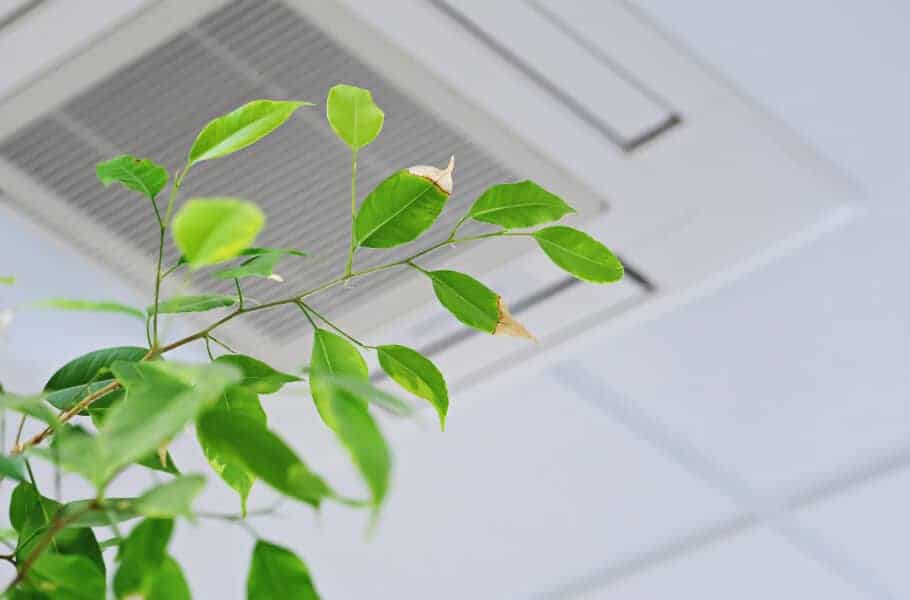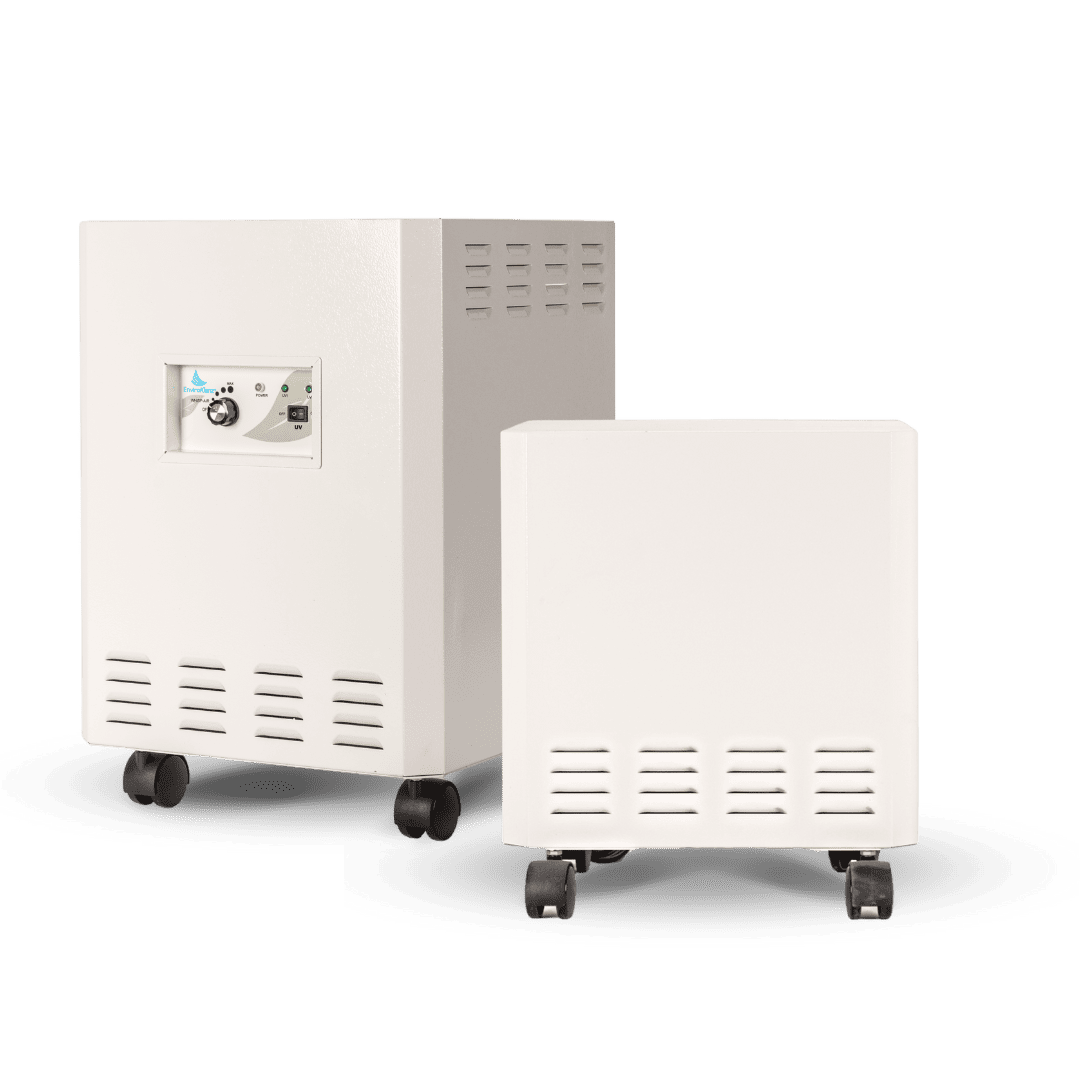It’s no secret that we spend a significant amount of our lives indoors, which makes the quality of the air we breathe in our homes all the more vital.
To help you create a safe living space, this article shares practical strategies and tips on how to improve indoor air quality. Let’s start by exploring the common sources of indoor air pollution.
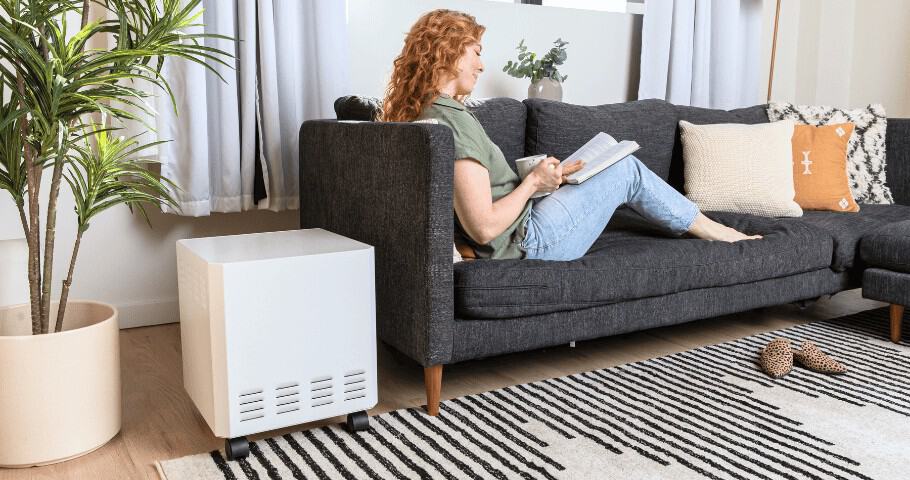
Where Does Indoor Air Pollution Come From?
Creating a healthier living environment starts with knowing where the usual suspects of indoor air pollution come from. Here are the common culprits responsible for diminishing indoor air quality.
- Dust. Fine particles of dirt, pollen, and other materials can accumulate in homes over time and become a potential source of indoor air pollution.
- Dander. Tiny flakes of skin shed by pets that potentially trigger allergies or asthma attacks in sufferers.
- Mold. Fungal growth in damp or humid areas that release mold spores can negatively impact indoor air quality.
- Pet hair. Fur and hair from animals can become airborne and pollute the air, especially in homes with shedding pets.
- Smoking. Tobacco smoke contains a wide range of harmful chemicals that can linger in the air and pose serious health risks.
- Chemicals. Volatile organic compounds (VOCs) found in common household products like cleaning agents and paints can release chemicals into the air.
- Candles. Burning candles, especially those made from paraffin wax, can release soot and potentially harmful chemicals.
- Incense. The smoke produced by burning incense can add potentially toxic substances to indoor air.
- Air fresheners. Many air fresheners contain synthetic fragrances and chemicals that mask odors but can worsen air quality.
- Fireplaces. Wood-burning fireplaces release particulate matter and pollutants into the indoor air, affecting overall air quality.
How to Test Indoor Air Quality
Indoor air quality plays a crucial role in your overall well-being, and there are various methods to evaluate it, such as through indoor air quality monitoring. Here are some common ways to assess your indoor air quality.
- Use an indoor air quality monitor. This nifty gadget keeps an eye on your indoor air around the clock. It is the simplest tool out there for an ongoing air quality check.
- Watch out for symptoms. Sneezing, sniffles, headaches, or a scratchy throat might be red flags for poor indoor air.
- Install an air purifier. Installing a first-rate air purifier like the EnviroKlenz Mobile Air System is one of the most effective ways to enhance indoor air quality. The device can eliminate dust, pet dander, pollen, and other contaminants from the air, keeping your home fresher and healthier.
- Use carbon monoxide and radon alarms. Carbon monoxide and radon can negatively impact your health, especially when in high concentrations. Install carbon monoxide alarms in your space and conduct a radon test to identify these health hazards.
- Test for mold. Humid areas in the home can hide mold and cause health problems. Airborne mold testing can help you identify if you’ve got a mold problem in your home.
Check out our guide to discover how to test indoor air quality effectively.
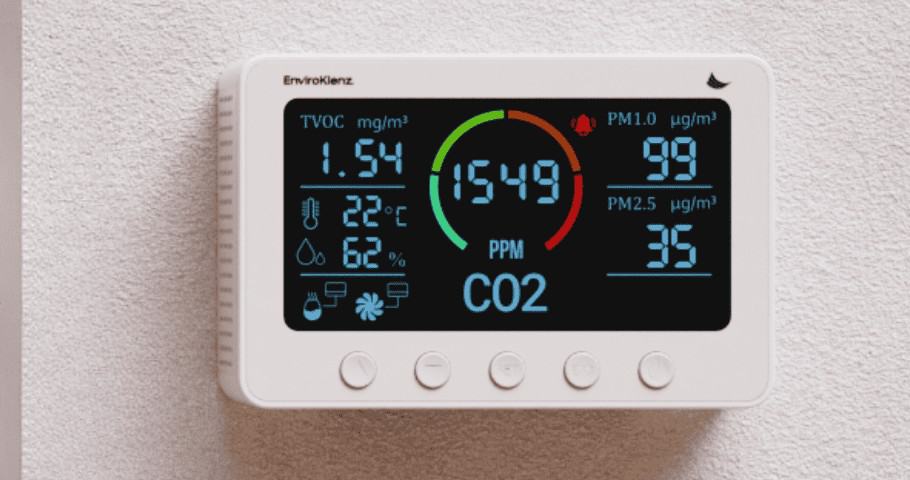
How to Improve Indoor Air Quality
1. Keep Carpets and Rugs Clean
Maintaining the cleanliness of your carpets and rugs is a key step in improving indoor air quality. These soft floor coverings can trap tiny particles and pollutants like dust and allergens, impacting the air you breathe.
Regular cleaning and vacuuming help prevent these airborne particles from becoming airborne, ensuring a fresher and healthier atmosphere in your home.
2. Improve Your Ventilation
Wondering how to improve air quality in an apartment? An effective method is enhancing ventilation in your space. Proper airflow helps remove indoor pollutants and brings in fresh outdoor air.
To achieve this, it’s a good idea to open windows when the weather permits. You should also consider using an exhaust fan or investing in an air exchange system for your indoor space.
3. Get Some Indoor Plants
Do indoor plants improve air quality? Yes, houseplants can release oxygen to create a fresher indoor environment and improve poor air quality.
However, research on the effectiveness of indoor plants varies. A 2022 study found that potted plants can remove nitrogen dioxide (NO2), especially in enclosed areas, while another study indicates that houseplants have limited pollutant-removing abilities.
While indoor plants act as natural air purifiers and bring a touch of nature to your living space, it is usually best to keep them out of your living space if you’re an allergy sufferer.
4. Use an Air Purifier
An air purifier is a powerful tool you should invest in if you’re wondering how to improve air quality indoors.
Top-of-the-line purifiers like the EnviroKlenz Mobile UV Model pair a medical-grade HEPA air filter with a high-quality Air Cartridge to capture and remove various indoor air pollutants, including dust, allergens, smoke, and pet dander.
5. Check and Change AC Filters Regularly
Here’s a simple yet effective tip on how to improve indoor air quality in offices, homes, or other living areas: routinely inspect and replace the filters in your HVAC system. These filters can become clogged over time, so regularly checking and changing them can keep the air in your space clean and free of particulate matter.
6. Use Cooking Vents
Don’t overlook the importance of using cooking vents when looking for how to improve air quality in an apartment. Cooking can release smoke, cooking odors, and particles that impact air quality. However, using kitchen vents while cooking, even during festive seasons, helps remove cooking-related contaminants.
7. Don’t Smoke Inside
Cigarette smoke is a major indoor air pollutant containing many harmful chemicals that can severely compromise air quality and may even affect children’s learning.
How can you improve indoor air quality if you or someone in your household smokes? One straightforward way is to avoid smoking indoors; designate smoking areas outside your living space to help keep the air you breathe cleaner and safer.
8. Light Beeswax/Soy Candles
When seeking how to improve air quality in your bedroom, consider lighting beeswax or soy candles. Unlike paraffin candles, these natural alternatives don’t release harmful chemicals when burned. Instead, they emit negative ions that can help neutralize indoor pollutants.
Want to learn more? Find out other ways s to improve air quality in your space.
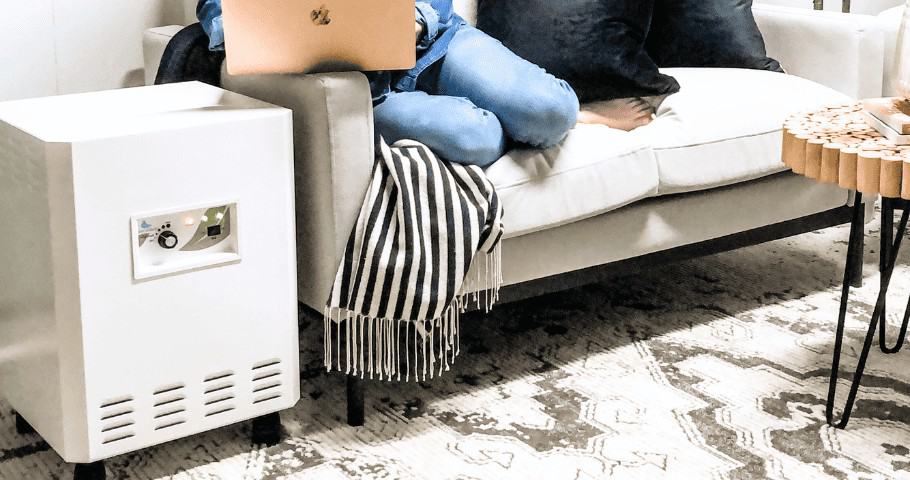
Importance of Indoor Air Quality Monitoring
Why should you bother consistently monitoring the air in your living space? Here are some compelling reasons:
- Protects your health. Regular monitoring helps keep you and those sharing your space healthy. It allows for the early detection of potential air quality issues, giving you ample time to address and rectify them.
- Enhanced productivity and well-being. Keeping tabs on indoor air quality makes your space more pleasant, boosting productivity and overall happiness.
- Preserve building integrity. Indoor air quality issues like mold growth, corrosion, and decay can harm your building’s structure. Monitoring can detect these issues early, preventing damage.
- Compliance with regulations. Staying on the right side of health and safety regulations is crucial for a safe and healthy living, working, or learning environment and indoor air quality monitoring helps you do just that.
Conclusion
In summary, knowing how to improve indoor air quality involves taking proactive steps like consistent indoor air quality monitoring, changing air filters, and using devices like air purifiers to remove pollutants and clean the air.
In the end, though, implementing these strategies goes a long way in creating a healthier living environment for yourself, and your loved ones
EnviroKlenz® Medical Disclaimer:
“Any information that is provided on this website is not for the use by any commercial or personal entity without expressed written consent of the blog author. The material and statements illustrated within this blog are not intended to diagnose, treat, cure, or prevent any diseases or medical conditions. Nor does the author in any way guarantee or validate the validity, totality, or efficacy of any claims and will therefore not be held responsible for the content of any claims. Always consult your medical physician for any specific medical advice or recommendations.”








